Torta pasqualina, Easter ricotta and artichokes pie from Genoa
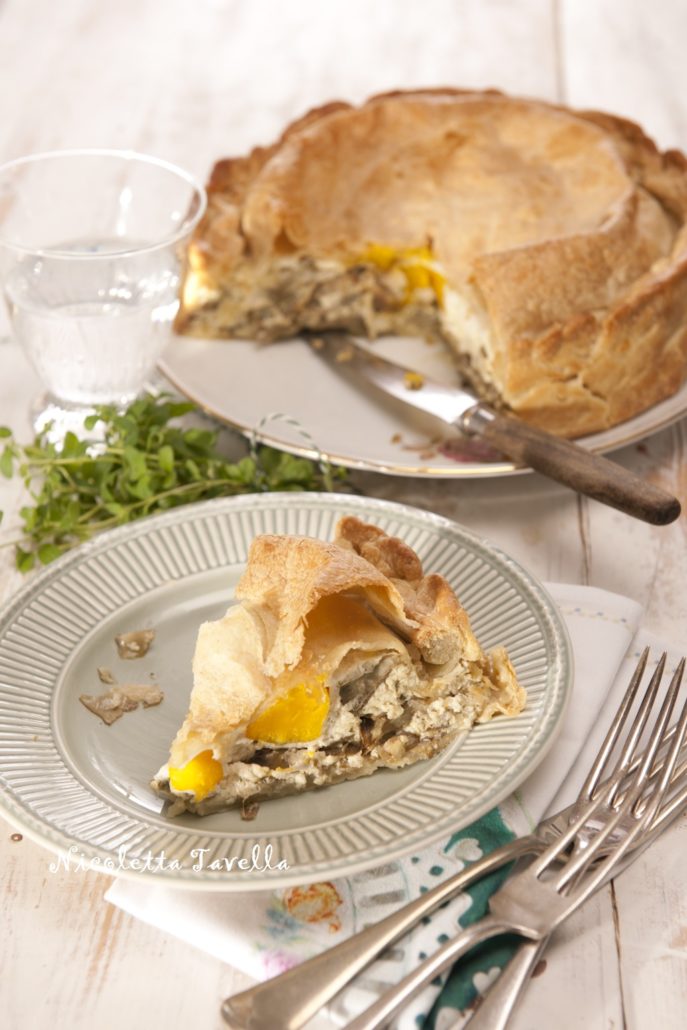
Torta pasqualina. Photo: Jan Bartelsman
Time for an Easter recipe from my second cookbook, “Cucina di casa mia“.
At home we always eat this savoury pie at Easter. It is, along with pesto, the most classic and recognizable dish from Genoa, the city where I was born. My grandmother Maria, the mother of my father, made it every year. As a child I was delighted to see how the whole eggs, which were added raw to the filling, would sometimes be cut exacly in half when the knife went through the baked pie like in this picture. So beautiful!
Originally, the pastry was made with 33 (!) super-thin layers of dough, as many as the years of Jesus when he died. Nowadays most people prepare a simplified version with just a few layers of dough, and sometimes even with puff pastry, which is not really what the original recipe requires.
The top layer is blown with the mouth to half a globe and quickly sealed so that it stays high and becomes crispy during baking but you can skip this step. I find it hard to describe how this happens, it is actually better to see it once it’s being done. My mother still does it every time she makes this wonderful vegetarian pie. Maybe one day I’ll make a little video while she prepares the pasqualina. 🙂
If you do not know how to clean small artichokes (i.e. the Italian or French ones) take a look at my video. If you can’t find artichokes you can use Swiss chard, which some families in Genova prefer, or bok choy.
The perfect music for this dish is by Genova’s most famous (and greatest) singer, Fabrizio de André. Here he sings in Genoa’s dialect.
Preparation: 45 minutes
Oven: 45 minutes
Serves 6-8
Ingredients:
320 g flour (preferably type ‘00’, plain flour is also OK)
6 + 6 spoons extra vergine olive oil + some for greasing
salt
lukewarm water
5-6 small Italian artichokes, cleaned and cut in thin wedges
a little bunch of parsley, only the finely chopped leaves
500 g ricotta
black pepper
2 + 5 eggs
150 g Parmesan or Grana cheese, grated
a big bunch of fresh marjoram, leaves only
a good pinch of grated nutmeg
Preheat the oven to 180°C.
Mix the flour with half the oil, a pinch of salt and 130 ml. of lukewarm water – added little by little – and kneed until you obtain a nice, elastic dough. If the dough is too wet you can correct this by incorporating a little extra flour. Let the dough rest in a bowl covered with plastic wrap and prepare the filling in the meantime.
Cook the artichoke wedges in the rest of the olive oil with a little salt. Stew them with the lid on the pan and add the occasional bit of warm water to keep them from drying and getting hard. Add the chopped parsley, stir and allow to cool slightly once completely cooked.
Mix the ricotta with salt and pepper to taste, the stewed artichokes, 2 eggs, the grated cheese, the marjoram leaves and a pinch of nutmeg.
Divide the dough into 3 balls and roll one portion as thin as possible using a rolling pin or pasta machine. If you use the machine you can create flaps of dough that you then stick together to get the desired size.
Grease a round, deep cake tin (Ø 24 cm.) with olive oil and line bottom and wall with 1/3 of the unrolled dough. Make sure the dough generously extends above the edge because it will be necessary to make the folded edge.
Fill with the ricotta mixture. Using a spoon make five indentations in the filling, one in the middle and four around it at equal distance. Try and avoid going till the bottom of the pie. Carefully break an egg into each “well”. The raw eggs will then cook in the oven. Yummy!
Roll the two remaining parts of dough making them quite thin too and place them both on the pie, one by one. Fold the overlapping portion of the bottom layer together with the other two and roll to seal creating a nice edge. Grease the top part and the rolled up edges with olive oil and place in the oven until the pastry is crunchy and golden.
Serve lukewarm or at room temperature.
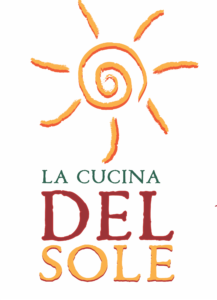
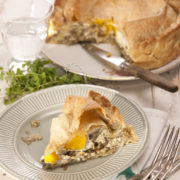
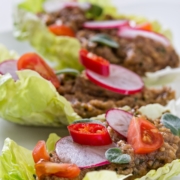
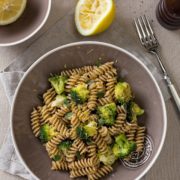
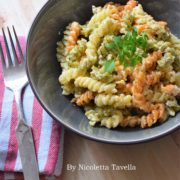
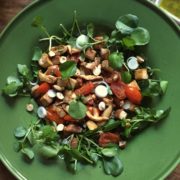
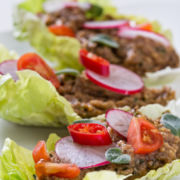
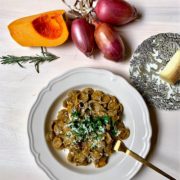



Leave a Reply
Want to join the discussion?Feel free to contribute!